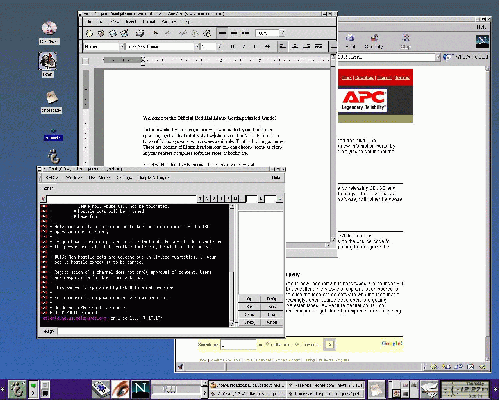Introduction
Welcome to the Official Red Hat Linux Getting Started Guide!
Just a few short years ago, a user who wanted to try out Linux had relatively few choices in the distributions, or types of packaged Linux operating systems, which were available. That's all changed. Now, there are dozens of Linux distributions from which you can choose.
But Red Hat Linux has remained a leading choice of Linux distributions for years. Here at Red Hat, we believe we offer the best Linux distribution on the market. We hope you'll agree that the time and money you spent to install and work with Red Hat Linux were well spent, indeed.
The Official Red Hat Linux Getting Started Guide is part of our effort to help you become acquainted with your new Red Hat Linux system.
Who Should Read This Book?
If you count yourself among the many who are discovering Red Hat Linux for the first time, this book is for you!
Inside, you'll find valuable tips and tricks which can help you get acquainted with your desktop environment. Concentrating on tasks in GNOME and KDE, you'll see how to navigate through your system, how to manage files and directories and how to make some of the power of Red Hat Linux work for you.
If you're most familiar with a Windows environment, you'll find the DOS-to-Linux commands in Appendix C to be a useful guide, so you can start looking around right away.
You'll learn how to accomplish such basic first steps as connecting to the Internet, configuring your e-mail client, adding a printer and more.
More advanced topics will cover how to work with Update Agent, so your system automatically stays current with critical software updates.
Is Red Hat Linux sharing your computer with Microsoft Windows? Turn to Chapter 17 to find out how you can allow Red Hat Linux to "see" into your other operating system, so you can perform certain tasks without having to reboot into the other operating system.
You'll even gain some experience at file management and system administration using the "shell prompt," the command-line interface.
In short, this guide picks up where the Official Red Hat Linux Installation Guide leaves off: by giving you the confidence to work with your new operating system.
